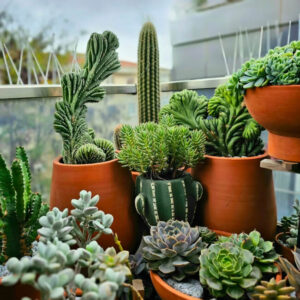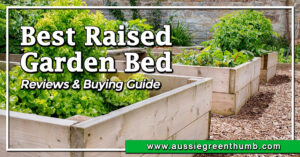Gardening with rocks or using rocks in the garden can offer growers multiple landscaping applications and possibilities so this is a great option for those who are looking to get a little creative and try something different with their next outdoor project.
With proper planning, a rock garden can be made to suit any existing outdoor space, big or small. These rockeries work great if you have steep banks or irregular terrain in your garden but will naturally require some physical effort and consideration to set up.
Once your design is established, you will then need to consider which plants to use and what conditions to create to allow your rockery to thrive throughout the year.
Here is your ultimate guide to gardening with rocks.
More...
Rock Garden or Gardening with Rocks
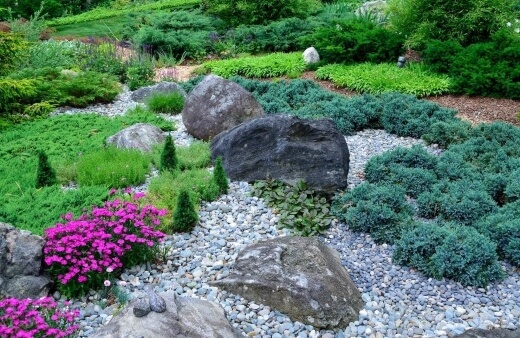
The popularity of gardening with rocks can be traced back to old English gardening traditions as well as early Chinese and Japanese civilisation.
Today these rockeries are used by some to create tranquil Zen gardens for meditative purposes whereas others use them to elevate the appeal and showiness of their gardens and outdoor spaces.
Either way, rock gardens not only add spectacle and a sense of calm to gardens, but they can also help to reduce water usage as well.
A rock garden is a section or area of land that is used to feature rocks that encompass flora and other natural elements. It is the purposeful arrangement of a collection of rocks, stones (add some glow stones for more colour), plants and flowers that is used as a feature in outdoor spaces.
You can keep things simple with your layout or create a more elaborate display depending on your space and capacity to maintain everything. Regardless of how you design and set up your rockery, you can easily enhance the scenic beauty of your natural landscape by using rocks.
Important Considerations When Rock Gardening

To help set you on the right path to creating the most suitable rock garden for your needs, there are a few things you can consider before establishing anything. These are:
- What climate do you live in?
- How much and what type of space do you have to work with?
- How much work will it take to establish and maintain your rock garden?
- What type or style of rockery are you hoping to achieve?
- What plants and flowers will allow you to create the colours and textures you want to highlight in the area?
If you are unsure about anything, it is best to start simple and small. You can always expand on or change your display in the future.
Rock Gardening Ideas & Location
Now that you have a good idea of where you’ll be establishing your new rocky landscape, you can consider different styles and start laying your foundations.
Styles can range from modern to minimalist, cute to rugged or anything in between. Most rock gardens consist of rocks of various sizes, arranged purposefully with small gaps in between them for plants to grow.
Here are a few popular ideas for gardening with rocks.


Get Your Free Guide:
Master Growing Australian Natives eBook
A Must Have Complete Guide for Every Australian Garden
Get Your Free Guide:
Master Growing Australian Natives eBook
A Must Have Complete Guide for Every Australian Garden
Large Boulder Rock Garden
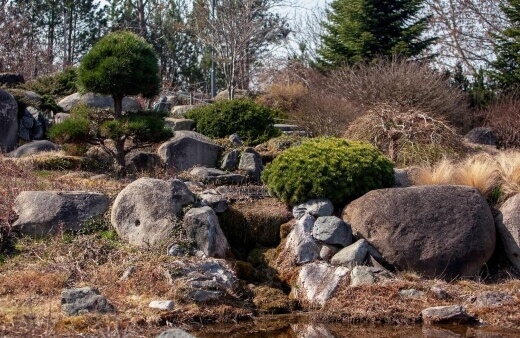
If you have ample space to use, you can use large rocks to form garden edges or position them as decorative features where small to medium-sized plants can be scattered strategically throughout the structure.
If working on a slope, be sure to start at the bottom and make sure the rocks are embedded into the ground correctly. It is recommended to bury half of the larger rocks. Use the boulders as a frame for your smaller details and create planting pockets for your soil.
Rock Garden Water Feature
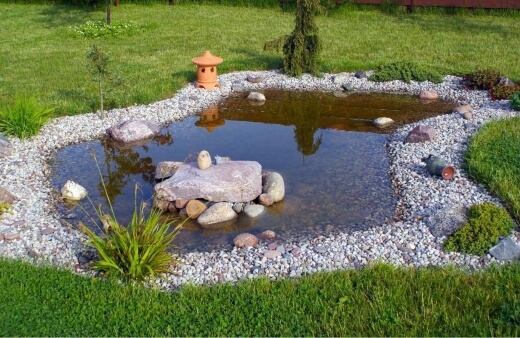
You can create a more harmonious space in your garden by pairing your rockery with the trickling effect of water. Building an aquatic feature into your rock garden like a fountain, pond or stream can help elevate the tranquillity and overall appeal of your display.
Water will also add a glistening shimmer to your rocks that will sparkle when the sunlight covers the area.
Rock Garden Feature Plants
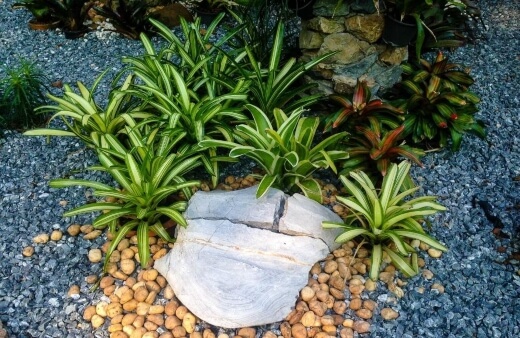
Landscaping rocks can also be used to enhance feature plants in your garden. Whether built as attractive edging for garden beds or used to highlight specific plants by creating small decorative spaces around them, rocks can quickly boost the floral spectacle of your outdoor areas.
Dark-green collections lend themselves well to light rocks that can pop in the scenery while gardens with lighter floral tones tend to look best paired with darker rocks.
When gardening with rocks there are no set rules and it is ultimately a matter of personal preference so get imaginative and try to have some fun with the process.
Smaller locations generally suit smaller arrangements where larger areas can be more extravagant and flashier. There is no shortage of rockery ideas so be sure to do some research or chat with specialists in your area if you feel you need some more inspiration.
Plants to Grow When Gardening with Rocks
Your plants should look as natural as possible within the rockery and should ideally be hardy and resistant to some changes in the environment.
Choosing which plants for rockeries to use mostly comes down to personal choice but generally, a mixture of a variety of plant types and textures that blend well looks fantastic against the smooth stone backdrops.
Your plants should seamlessly merge into the rocks where the entire display should look as if it was formed naturally. Larger trees or shrubs can be used in the background of the display where the smaller dwarf plants can be integrated into the structure more intricately.
You should always use quality soil that is well-draining and that allows for adequate depth for plant roots to establish themselves correctly.
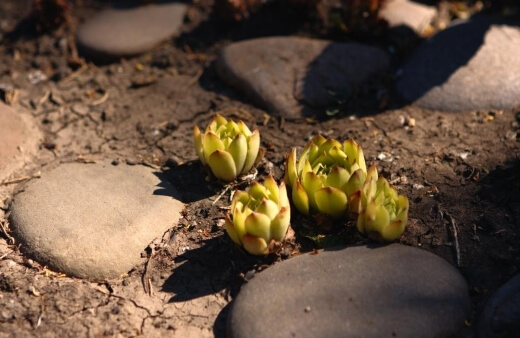
Here are some popular plant choices:
- Succulents - see our compilation of succulents you can grow in Australia.
- Ground cover plants
- Ferns - such as Maidenhair ferns
- Native shrubs - See our growing guide for Grevillea nudiflora
- Trees
- Perennial flowering plants
- Herbs
Think about which colour pallets and pairings you want before planting your collection and also be sure to consider some native plants, ferns or shrubs as they will help boost that natural appeal to your display.
Tips for Gardening with Rocks
Building rock gardens can be a simple process where your creativity is reflected in your natural spaces. Here are a few tips for you to get the best results when landscaping rocks.
- Don’t overthink selecting your rocks. Locally sourced rocks and products may also be a great option for helping to seamlessly blend your environment with your rockery.
- A soil mixture of 2 parts loam soil, 1 part peat moss and half a part of compost should work great for your plants. The soil must be well-draining.
- Your flowers and plants should complement your rocks and not overshadow them. Plants that are too big or too small can either be suppressed by the rocks or draw attention away from them. Balance is key so take your time and start small if you have to.
- Choose a selection of large rocks, pebbles and gravel to add variety to the tone and texture of your rock garden and consider the placement of your rocks in relation to your plants.
- Be sure to also consider the maintenance that will be required to keep your rocks and plants looking good.
(Previously, we promoted peat/sphagnum moss. However, in view of its environmental consequences, we've adjusted our stance to favor eco-friendly alternatives that are just as effective, if not better. Refer to our comprehensive guide if you'd like to delve into peat moss and its alternatives.)
Decorative Pebbles: Finite resource raping developing nations
We became alarmed when animal species began to decline and become extinct. Then we started exposing tree fellers in the Amazonian jungles. But now a new scourge has lifted above the horizon that many gardeners are seemingly unaware of – garden decorative pebbles or river stones as they are also affectionately marketed.
Fast becoming the mulch of choice for many landscapers due to their varied textures, colours and size, these decorative pebbles are turning up in gardens all over the world. And why not?
They’re natural, can quickly transform a garden area and are basically maintenance free. Plus, they don’t need to be renewed – so long as we don’t take fashion trends into account.
What could possibly be wrong with gardeners utilising these natural resources?
Two reasons, really. Firstly, most decorative pebbles come from a finite source – ie. that being the rivers of the world. What has taken hundreds – maybe thousands – of years to cultivate through erosion of larger rocks will take the same amount of time to replenish.
However, at the rate that the world is excavating these for home gardeners there will be a lag of a few thousand years before the next harvest is ripe.
The second reason is far more concerning. These pebbles play an important part in our river systems. While they get tumbled and smashed against each other or larger rocks on their descent therefore producing more silt, it is actually the silt that holds them back from moving too fast through the river.
If you take these river stones out of the equation then silt can become a problem further down the river. Increased levels of silt can bring a heap of problems as it builds within the river delta.
The sheer volume can increase water temperatures killing fish and producing algae that destroys the life within these rivers. And the effects are irreversible. While it may not affect your backyard it is having, and soon will have, devastating consequences in developing nations where these are sourced.
Countries such as China, Vietnam, Thailand and India are the big exporters and while the price is high these countries will always put economic gain ahead of their future environmental welfare.
What can be done to save these decorative pebbles?
Firstly, if you plan to use decorative pebbles in your landscape then buy them from a producer that sources them from less important rock specimens. If they come from a river bed somewhere they will always be doing the environment harm.
Yet, if they are produced as a byproduct of mine tailings or sourced from rocks that have little impact on the earth’s structure then they will be far more appropriate. Even better than the first option is not to use them at all.
Stick with organic mulches that are readily renewable and are much better for your garden soil anyway. Decorative pebbles may be the current landscaping trend but is the cost worth the aesthetic appeal?
Rock Garden Frequently Asked Questions
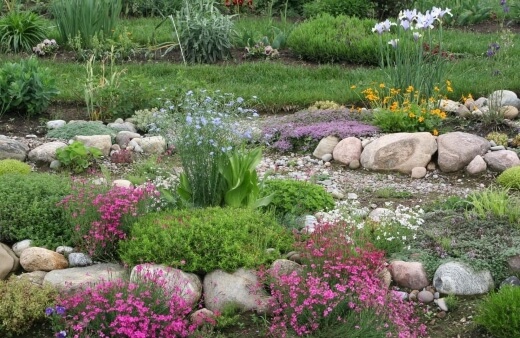
When should you plant a rock garden?
Autumn and winter are good times to construct your rock features while there isn’t much to do in the garden. Planting in spring is recommended as a large range of plants are available at this time.
How do you plant flowers in a rock garden?
Allow for around 10 to 15 centimetres of soil beneath your plant and try to keep the rock away from the base of your plants. You can cover your soil with mulch to help stabilise your plants and help with moisture retention.
Do rockery plants like shade?
You should ideally try to use plants that can tolerate some shade. Rockeries can disrupt light and temperature levels so try using plants that are known to thrive in full sun to part shade and plants that are resistant to changes in temperature and humidity.
Have Fun Creating Your Rock Garden
Gardening with rocks is a fast-growing trend that offers homeowners the chance to create unique and dramatic scenery in their gardens. From simple and compact designs to more extravagant displays, landscaping rocks can help enhance any garden or outdoor space by pairing the anchored foundations of rocks with vibrant and dynamic arrangements of greenery and flowers.
If you’re looking to boost your next landscaping project and add a unique, personal touch to your front or back yard, gardening with rocks might be the perfect option for you.
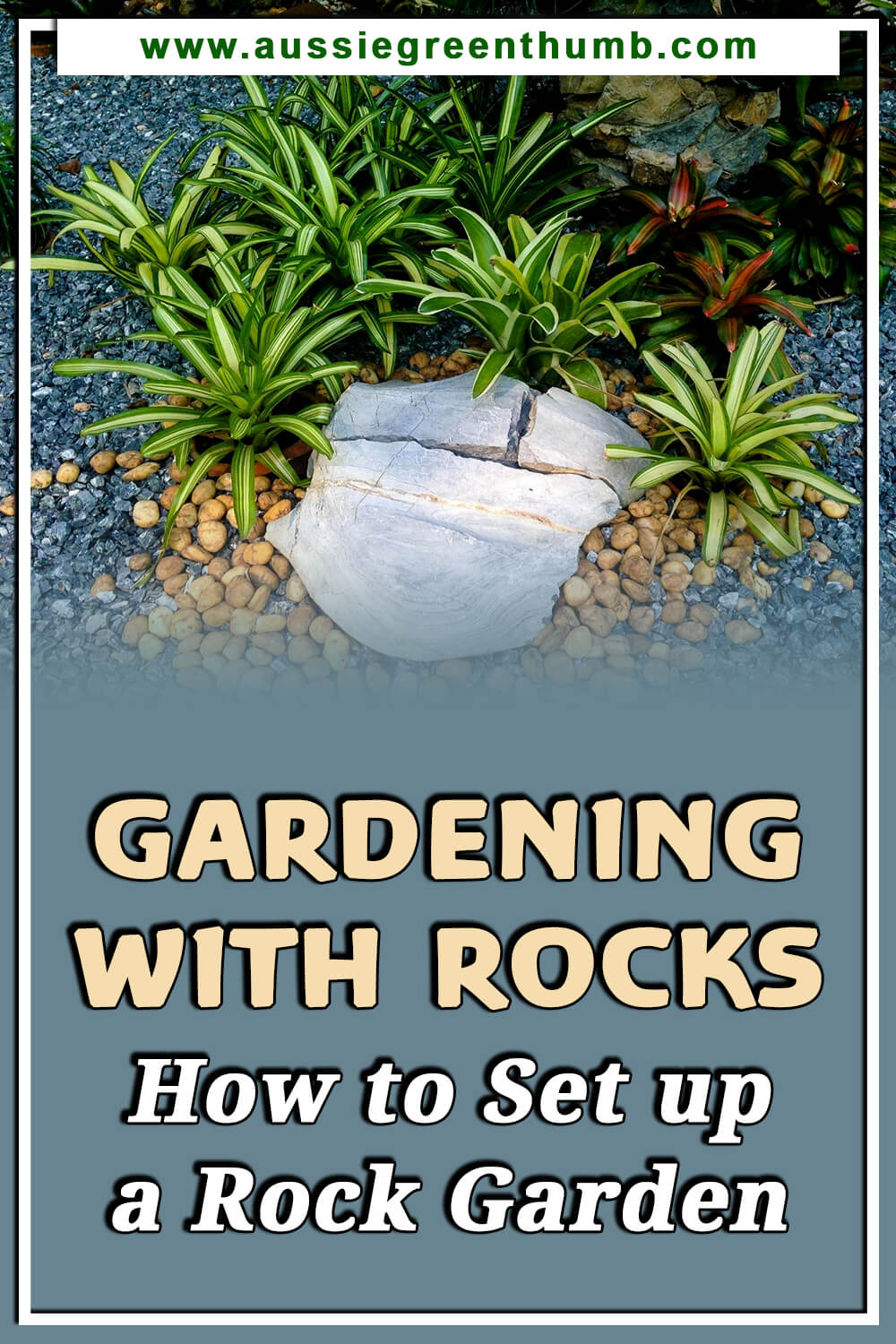
Published on April 4, 2022 by Gary Clarke
Last Updated on September 20, 2025

